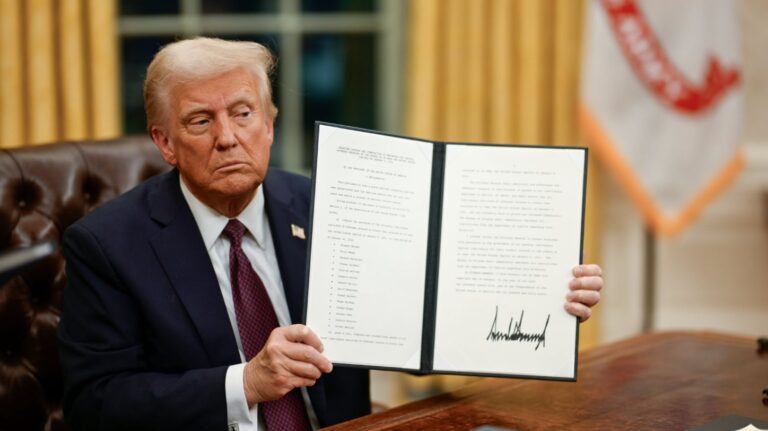On 22 January 2025, US president Donald Trump issued a memorandum instructing key federal agencies to assess US trade policy, ahead of the potential implementation of new tariffs aimed at bolstering the US economy and addressing trade deficits.
The evaluation is designed to align with Trump’s “America First” trade agenda, emphasising national security, industrial competitiveness, and supply chain stability.
The memorandum directs several federal bodies, including the US Department of Commerce, the Department of Treasury, and the United States Trade Representative (USTR), to review and recommend policy actions concerning the US supply chain and trade relations. Among the core objectives is the evaluation of US trade deficits, with a focus on economic and national security risks posed by these imbalances. The administration is particularly concerned with foreign trade practices that could undermine domestic manufacturing and industries critical to national defence.
One of the main elements of the memorandum calls for an investigation into establishing an External Revenue Service (ERS) to improve the collection of tariffs and trade-related revenues. This move could potentially address gaps in the current trade enforcement infrastructure, ensuring that US policies around tariffs are properly executed, particularly with regard to foreign goods entering US markets.
The memorandum also addresses challenges in the global supply chain, particularly with respect to the importation of counterfeit products and contraband, such as fentanyl. Federal agencies are tasked with reviewing policies surrounding de minimis exemptions – the duty-free allowance for low-value goods – to reduce the risks posed by illegal imports and protect US industries from unfair competition.
In addition, the document orders the USTR to examine current trade agreements, including the US-Mexico-Canada Agreement (USMCA), and consider adjustments that could provide more favourable conditions for US workers, farmers, and manufacturers.
The USTR is further directed to look into the impact of trade deals on American supply chains, ensuring that the US can negotiate better terms with foreign partners that could improve export market access and reduce dependency on foreign sources.
The review also touches on the strategic vulnerability of US supply chains, particularly in light of the growing economic tensions with China. As part of the broader evaluation, the USTR is instructed to explore tariff modifications concerning industrial supply chains and identify any circumvention tactics through third countries. The possibility of additional tariffs on Chinese goods, particularly those that impact US technology and manufacturing sectors, remains a key area of focus.
The agencies involved in the review are expected to present their findings and recommendations by 1 April 2025, in a series of coordinated reports. The results will form the basis of a potential shift in US trade policy aimed at reducing trade imbalances, protecting domestic industries, and enhancing the resilience of US supply chains against global disruptions.
This comprehensive policy review underscores the former president’s ongoing emphasis on economic nationalism and his approach to ensuring that US trade policy serves the dual purpose of securing both economic growth and national security.
While the formal memorandum does not immediately alter existing trade frameworks, its directives signal a more assertive posture on trade enforcement and supply chain resilience going forward.







